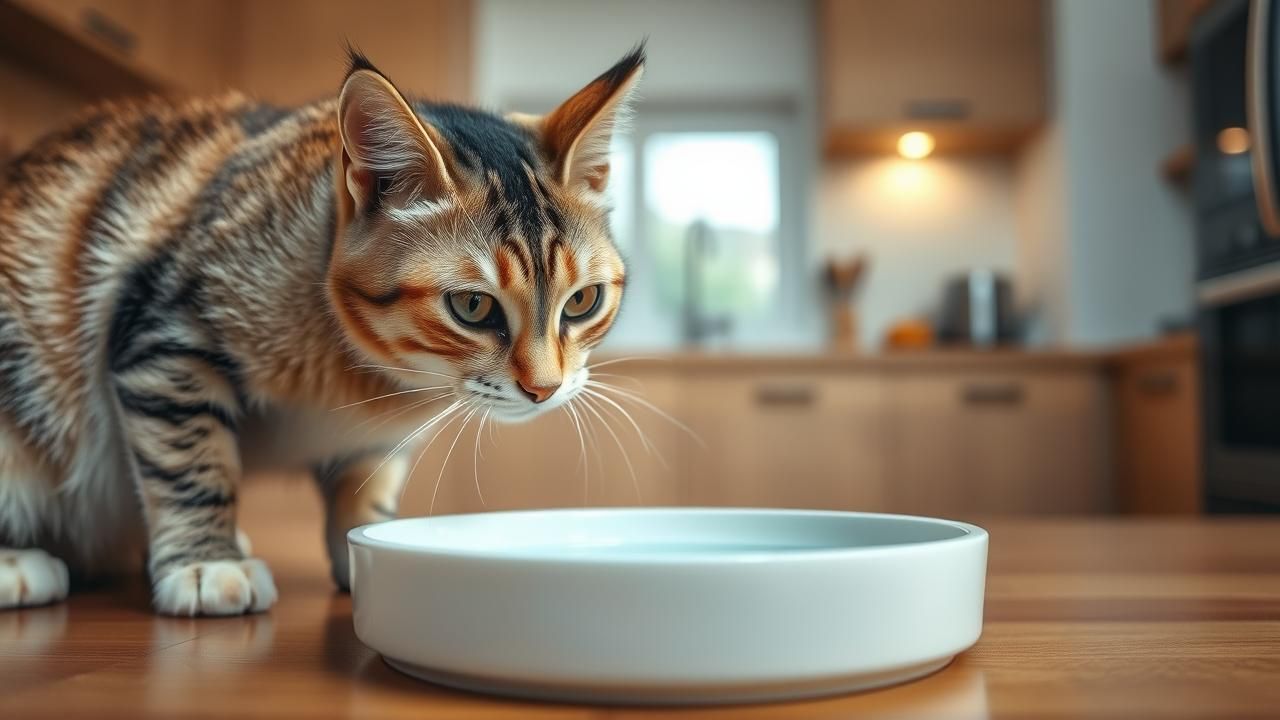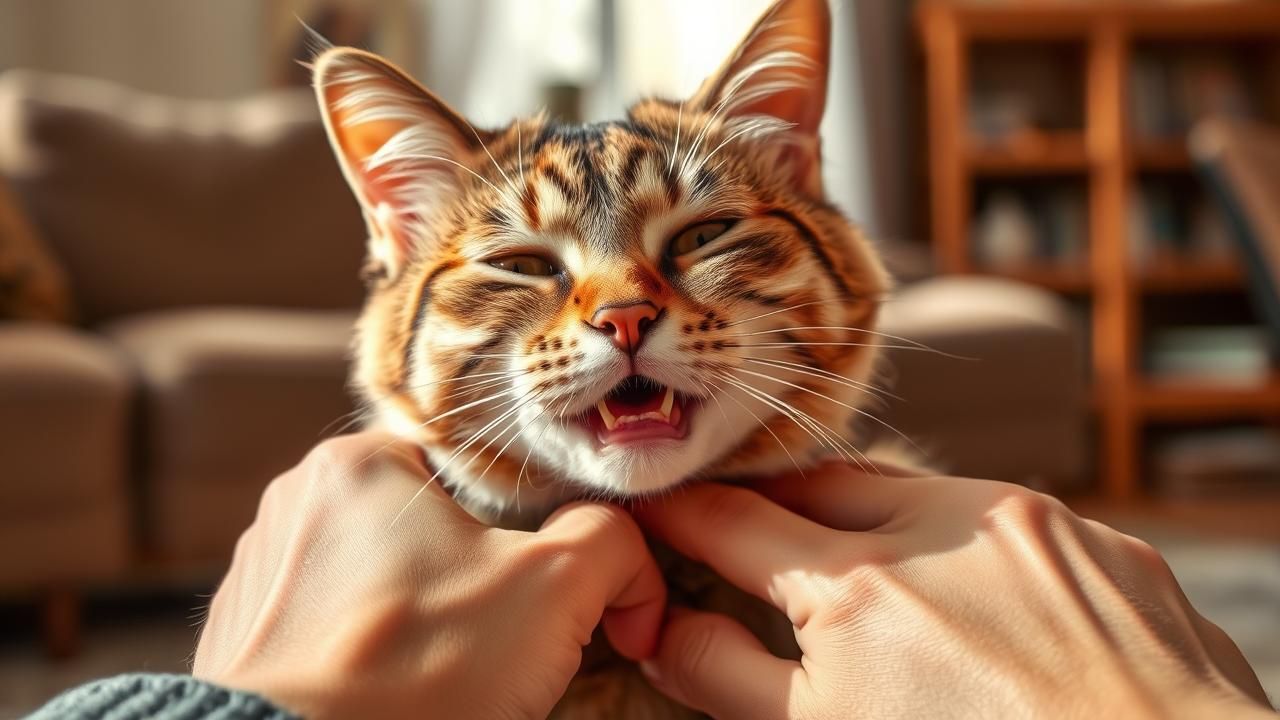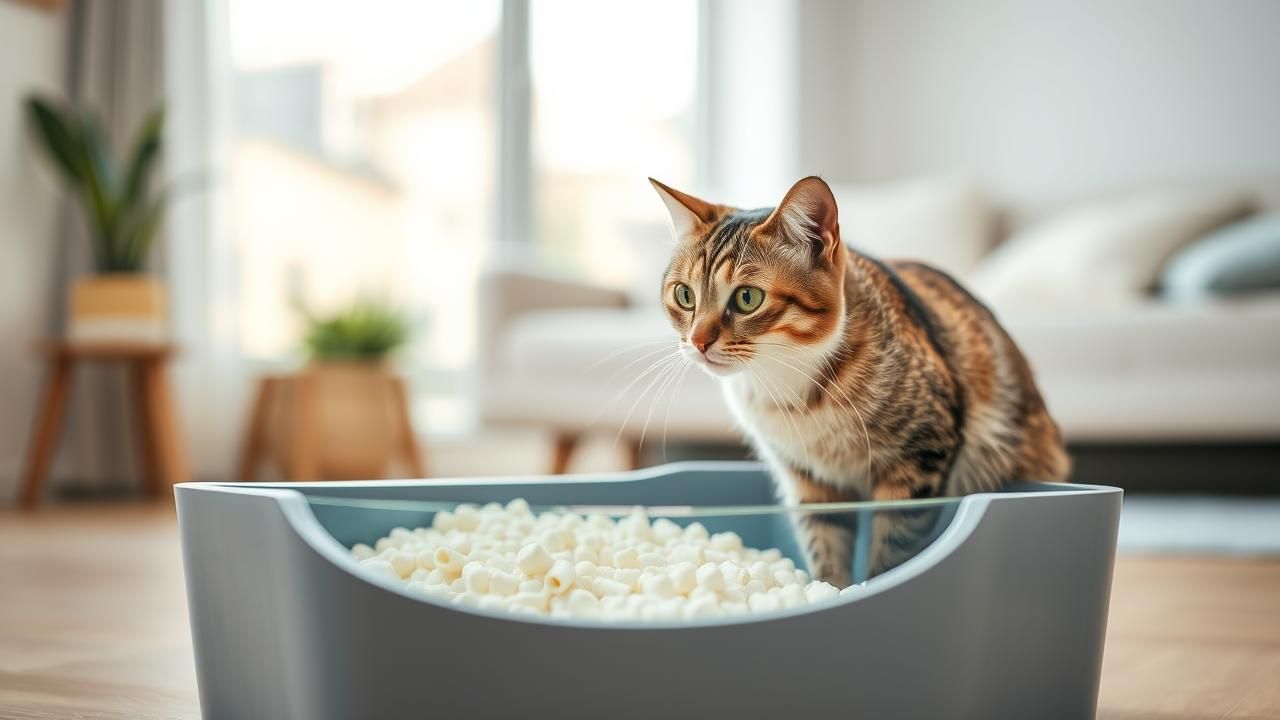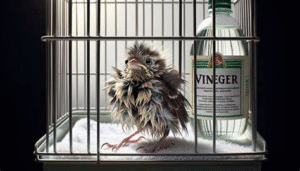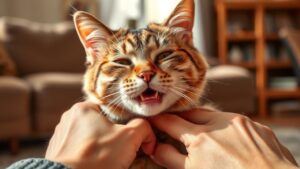Is Your Cat Sneezing? Spotting the First Signs of a Cold
An occasional sneeze from your cat is usually nothing to worry about. Just like humans, cats may sneeze to clear their nasal passages of dust, pollen, or other minor irritants. However, when sneezing becomes persistent or is accompanied by other symptoms, it often signals the onset of a Feline Upper Respiratory Infection (URI), commonly known as a “cat cold.”
Distinguishing a harmless sneeze from a sign of illness comes down to frequency and context. A single sneeze after sniffing a dusty corner is normal. A series of sneezing fits throughout the day, especially for more than a day or two, is a red flag.
The vast majority of cat colds are caused by two viruses: feline herpesvirus type-1 (FHV-1) and feline calicivirus (FCV). The Cornell Feline Health Center reports that these two viruses account for nearly 90% of all feline respiratory infections. These infections are highly contagious among cats, particularly in multi-cat households or shelters.
Pay close attention to these initial signs that your cat’s sneezing is more than just a random occurrence:
- Persistent Sneezing: Instead of one or two sneezes, your cat is sneezing multiple times in a row or has several sneezing episodes over a 24-hour period.
- Watery Eyes or Conjunctivitis: You may notice clear, watery discharge from the eyes. Sometimes the third eyelid (nictitating membrane) may be visible, or the whites of the eyes may look red and inflamed, a condition known as conjunctivitis. VCA Animal Hospitals notes this is a common symptom of URIs.
- Nasal Discharge: A runny nose often accompanies the sneezing. Initially, the discharge may be clear and watery.
- Coughing or Gagging: While less common than sneezing, some cats with a URI may develop a cough. It’s important to distinguish this from wheezing or difficulty breathing, which are more serious signs.
Decoding Eye and Nasal Discharge in Your Sick Cat
When your cat has a cold, the discharge from their eyes and nose offers important clues about the infection’s severity. Paying attention to its color and consistency can help you and your veterinarian determine the best course of action.
Clear Discharge
At the beginning of a typical URI, both eye and nasal discharge are usually clear and watery. This is the body’s initial immune response to the viral infection. While it’s a sign of illness, clear discharge on its own is less alarming. However, it should be monitored closely, especially if accompanied by other symptoms like lethargy or loss of appetite.
Yellow or Green Discharge
A change in discharge color from clear to yellow or green is a significant indicator that a secondary bacterial infection has likely developed. According to PetMD, this happens because the initial viral infection damages the nasal passages, making them vulnerable to bacteria. The colored discharge is a mixture of mucus and pus (dead white blood cells) as the body fights off the new infection. If you see yellow or green discharge, it is a clear signal that you should contact your veterinarian, as antibiotics may be necessary.
Thick or Tenacious Discharge
As an infection progresses, the discharge can become thick and sticky. This may cause your cat’s nostrils to become blocked, forcing them to breathe through their mouth. It can also cause their eyelids to stick together. You can provide comfort by gently wiping your cat’s nose and eyes with a soft, damp cloth to keep them clean. Monitoring these changes is crucial, as a simple viral cold can become more serious if a bacterial infection takes hold.
Behavioral Clues: Why Lethargy and Loss of Appetite Are Red Flags
Beyond sneezing or watery eyes, your cat’s behavior provides some of the most crucial clues about their health. Cats are masters at hiding pain and illness, a survival instinct from their wild ancestors. As a result, subtle changes in their daily routines are often the first and most reliable signs that something is wrong.
Lethargy and Reduced Energy
It’s normal for cats to sleep a lot, but lethargy is a state of exhaustion, sluggishness, or unusual indifference. When a cat is sick, its body diverts energy to the immune system to fight the infection, leaving little for normal activities. The Cornell Feline Health Center explains that this lack of energy is a common, non-specific sign of many medical conditions. Signs of lethargy include:
- Sleeping more than usual, often in an isolated spot.
- A lack of interest in playing, treats, or interaction.
- Failing to respond to stimuli they normally enjoy, like the sound of a favorite toy.
Loss of Appetite and Changes in Thirst
A reduced or complete loss of appetite (anorexia) is a major red flag. A cat with an upper respiratory infection will often stop eating because a congested nose prevents them from smelling their food, a key driver of appetite. Refusing to eat for even a day or two can be dangerous. Overweight cats that stop eating are at risk for a life-threatening liver condition called hepatic lipidosis. The Cornell University College of Veterinary Medicine stresses that this condition can develop rapidly when a cat is anorexic. Similarly, monitor their water intake to prevent dehydration.
Hiding and Other Social Changes
When cats feel vulnerable, their instinct is to hide. A cat that suddenly starts spending all its time under the bed or in a closet is likely feeling unwell. VCA Animal Hospitals highlights this behavioral change as a primary sign of illness. Also watch for personality shifts, like a friendly cat becoming irritable or changes in grooming habits. An unkempt coat can be a sign that your cat isn’t feeling well enough for self-care.
When It’s More Than a Cold: Ruling Out Serious Health Issues
While most cases of sneezing and watery eyes point to a common URI, some symptoms can signal more serious underlying conditions. It is crucial for cat owners to know how to distinguish between a simple cold and a potential emergency.
- Feline Asthma: If your cat’s symptoms include coughing, wheezing, or open-mouthed breathing, they may have feline asthma. An asthma attack is a medical emergency that requires immediate veterinary care, as emphasized by the Cornell Feline Health Center. Unlike a cold, asthma typically does not cause fever or colored nasal discharge.
- Dental Disease: An abscessed tooth root in the upper jaw can lead to facial swelling, one-sided nasal discharge, and sneezing as the infection spreads to the nasal sinuses. Other signs include drooling, difficulty eating, and bad breath.
- Foreign Bodies: Occasionally, a cat may inhale an object like a blade of grass, causing violent, sudden sneezing, pawing at the face, and discharge from one nostril. A veterinarian will need to sedate your cat to safely locate and remove the object.
- Other Infections: More serious viruses like Feline Immunodeficiency Virus (FIV) and Feline Leukemia Virus (FeLV) can weaken a cat’s immune system, leading to severe or chronic URIs. Other pathogens like Bordetella bronchiseptica may also require specific treatments.
If your cat’s symptoms are severe, persist for more than a week, or are accompanied by any of these warning signs, do not dismiss it as “just a cold.” A thorough veterinary evaluation is essential.
Your Action Plan: Home Care vs. Calling the Vet
Knowing when to provide home care versus when to seek professional help is key. Here’s a clear action plan for caring for your sick cat.
Supportive Home Care for Mild Colds
If your cat has mild symptoms (sneezing, clear discharge) but is still eating, drinking, and acting relatively normal, you can help them feel more comfortable at home:
- Increase Humidity: Use a humidifier or bring your cat into the bathroom during a shower to let steam loosen congestion.
- Keep Their Face Clean: Gently wipe away eye or nasal discharge with a soft, damp cloth to prevent blockages and crusting.
- Encourage Eating and Drinking: Offer pungent, appealing wet food, warmed slightly to enhance its aroma. Ensure fresh water is always nearby.
- Provide a Quiet, Comfortable Space: Let your cat rest in a warm, draft-free area where they feel safe and undisturbed.
When to Call the Veterinarian Immediately
Certain symptoms are red flags that require prompt veterinary attention. Do not wait if you observe any of the following:
- Difficulty Breathing: Open-mouthed breathing, wheezing, or labored breaths are a medical emergency.
- Refusal to Eat or Drink for 24+ Hours: This poses a risk of dehydration and hepatic lipidosis. As Cornell University warns, this is a critical sign.
- High Fever: A rectal temperature over 102.5°F (39.2°C) indicates a significant infection.
- Yellow or Green Discharge: This signals a probable secondary bacterial infection requiring antibiotics.
- Symptoms Worsen or Don’t Improve: If your cat’s condition declines or does not get better within 5-7 days, a vet visit is needed.
- Extreme Lethargy: If your cat is unresponsive or hiding constantly, they need to be seen by a professional.
By following this action plan, you can effectively support your cat through a mild illness and act decisively when symptoms point to a more serious health problem.



